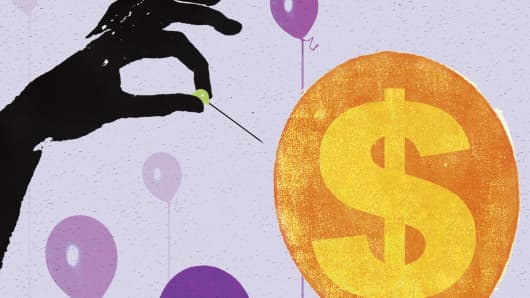Over the past few years, inflation has consistently undershot expectations, mainly due to declining oil prices and falling economic sentiment. Turmoil caused by the likes of China's currency devaluations and the UK's decision to leave the European Union also weighed heavily on inflation expectations. The Federal Reserve's accommodative monetary policy decisions and guidance did nothing to lift those expectations.
Nevertheless, except for the short interruption caused by the Brexit vote, markets have stabilized in recent months. Fears about a potential recession in the U.S. have subsided. Core inflation has consistently been above 2 percent for nearly a year, and headline consumer price index (CPI) inflation has risen from zero to 1.5 percent. We expect total inflation to reach 2.5 percent by the end of next year. The following three catalysts should boost the CPI and inflation expectations over the next six to 12 months.
1. Limited slack in the U.S. labor market
The most important factor for the U.S. economy in relation to inflation is the very tight labor market. According to the so-called Phillips curve, there is an inverse relationship between inflation and unemployment. The Atlanta Fed wage growth index has started to rise as the unemployment rate has dropped closer to the non-accelerating inflation rate of unemployment (NAIRU), below which inflation rises, as estimated by the OECD. This shows that the labor market is now close to full employment and will exert upward pressure on wages and subsequently prices.
A tighter U.S. labor market means that rising future demand will have to be addressed by raising prices rather than hiring more people. This has wider implications for the services sector of the U.S. economy. Services represent about 75 percent of the CPI, and higher employment translates into higher consumption of discretionary goods.
2. Stabilizing oil prices
While the oil price represents only a small part of the CPI (approximately 6 percent), it greatly affects inflation expectations. This is evidenced by the correlation between West Texas Intermediate (WTI) crude oil prices and financial markets' inflation expectations, as measured by the gap between the yield on five-year U.S. Treasuries and Treasury Inflation-Protected Securities or Tips. Oil prices declined by about 75 percent from their highs in mid-2014 to their lows in February this year. This had negative effects on measured CPI inflation. Now that oil prices have stabilized and increased moderately, we expect these effects to fade and inflation expectations to rise.
3. Slowing U.S. dollar appreciation
Lastly, the strong U.S. dollar has resulted in imported deflation over the past two years. The U.S. dollar has now leveled off, but remains close to its highest level in 10 years, and import prices have been rising for the past year. Higher import prices will allow domestic producers, previously forced to lower prices in order to stay competitive, to raise prices again.
Rising inflation and inflation expectations reduce the purchasing power of investors' money, can force interest rates upwards, and put downward pressure on the value of their high-grade fixed income holdings.
As a way of hedging against inflation and diversifying their portfolio, investors should consider investing in Treasury Inflation Protected Securities maturing in three to seven years, funded by selling Treasuries of an equivalent maturity. Shorter-term TIPS tend to be more volatile due to their greater correlation with oil prices, while longer-term TIPS are less liquid. Moreover, a U.S. downturn within the next seven to 10 years is statistically highly likely.
Several factors could lead to a negative performance. A prolonged fall in oil prices to below $40/barrel could suppress inflation expectations and have delayed negative base effects on the CPI. Likewise, a U.S. recession would hurt the position. A strengthening U.S. dollar would also pose a risk, though of a lower magnitude. If the Fed was to tighten much more aggressively – a 25 basis point hike every quarter for the next 18 months – we don't believe inflation expectations would rise.
Lastly, severely tightening financial conditions would be a headwind for the position. TIPS are less liquid than Treasuries and suffer if liquidity is squeezed out of the market.
Nevertheless, TIPS generally help diversify portfolios and provide protection against a fall in the real value of accumulated capital in an inflation environment. As mentioned, we forecast headline CPI to rise from 1.5 percent currently to 2.5 percent by late 2017. Our conviction is supported by a tight U.S. labor market, a stabilization in oil prices, and lower pricing pressure from a strong U.S. dollar. We maintain our base case view that TIPS should outperform nominal U.S. Treasuries over the next six to 12 months.


